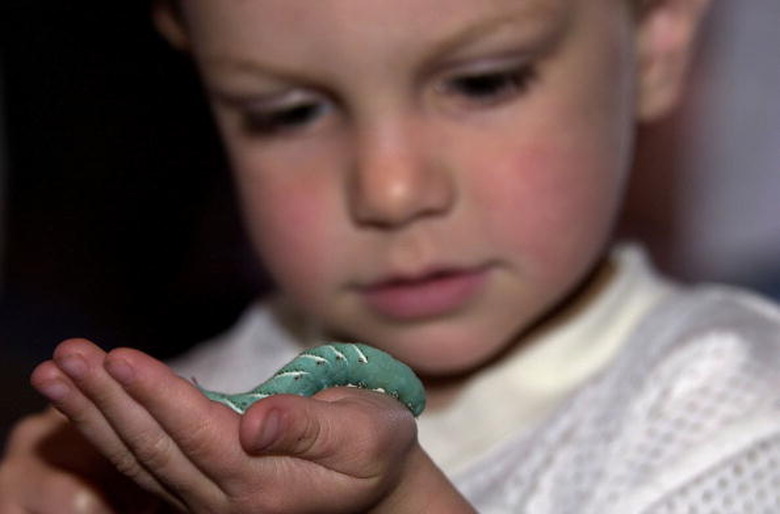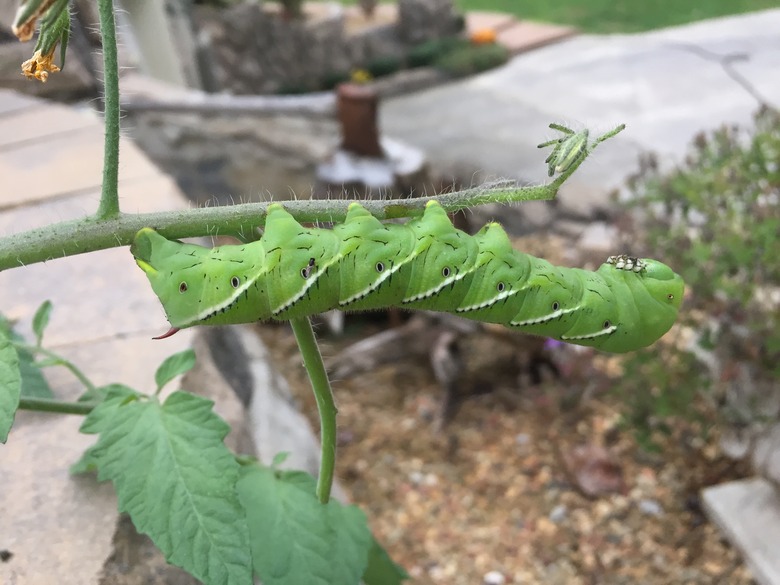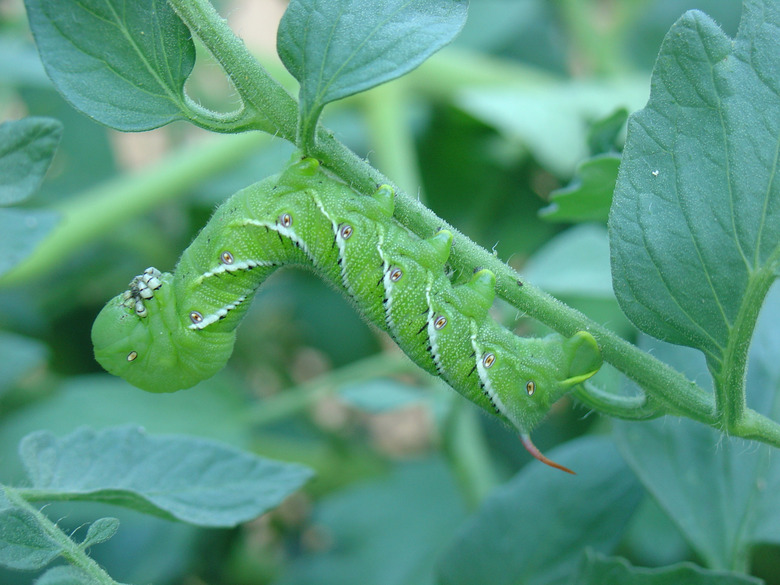How To Identify The Green Horned Caterpillar
If you spot a green caterpillar with a horn in your garden, it is likely a hornworm. There are two species of hornworm—the tomato hornworm and the tobacco hornworm—and both can cause a lot of damage to garden crops in North America.
These large caterpillars are the larvae of two different species of moth: the fivespotted hawkmoth (Manduca quinquemaculata) and the Carolina sphinx moth (Manduca sexta), respectively.
Green Horned Caterpillars
Host plants for the tomato hornworms and tobacco hornworms include crops in the nightshade family of plants, such as tomatoes, eggplants, peppers and potatoes. As its name suggests, the tobacco hornworm is also a pest of tobacco plants.
Both the tomato hornworm and the tobacco hornworm are similar in appearance. The bodies of both worms are both a bright green color with black and white markings, as well as eyespots. Their green color allows them to blend in with leaves. Both species get their common name from their posterior spines.
In addition, both hornworms measure about 4 inches in length at maturity. However, there are some differences between the two species that can allow you to tell them apart.
Tip
You can tell tomato hornworms and tobacco hornworms apart by looking at the color of their rear spine and the shape of the markings on their bodies.
Markings
The tomato hornworm caterpillar has eight V-shaped markings on its body. The markings are white and point toward the caterpillar's head. Meanwhile, the tobacco hornworm has seven diagonal white stripes on its green body.
Spine
The tomato hornworm can be identified by the black horn on the rear end of its body. Tobacco hornworms, on the other hand, have orange-red horns.
Hornworm Garden Control
Tomato plants are most susceptible to feeding by a green caterpillar with a spike. While adult moths lay their eggs on the undersides of leaves, they do not harm plants.
At the larval stage, however, these garden pests chew on the tomato leaves, creating holes in the foliage and eventually defoliating the plant, which can diminish fruit production. In large numbers, these caterpillars may also feed on fruit, stems and flowers.
In a home garden with a few plants, you can hand pick these types of caterpillars and drop them in soapy water to eliminate them instead of resorting to insecticides. Check your plants for caterpillars in the early morning or late evening, as these caterpillars tend to be elusive during the day.
Tip
Handpicking hornworms off your garden plants is one way to keep these pests in check.
Eventually, caterpillars fall to the ground as pupae before becoming adults. Tilling the soil in your tomato beds in spring and fall can help destroy the pupae. Setting up traps for adult moths can also help prevent them from laying eggs.
It is also worth remembering that hornworms are preyed upon by beneficial insects that can help keep them in check. Ladybugs and lacewings for example, feed on these green horned caterpillars. And braconid wasps parasitize hornworms by laying their eggs inside the caterpillars' bodies. Therefore, it is important not to harm these natural predators with insecticides.


